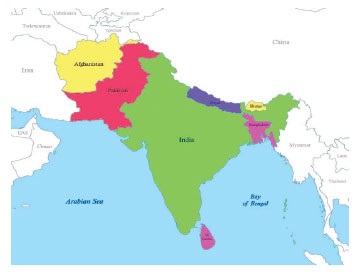Bangladesh’s Diplomatic Strategic Plan and Its Impact on South Asia
Dr Hafiz Rahman | Source : Daily Sun, 22 January 2025

Bangladesh has consistently pursued a pragmatic, amicable and balanced diplomatic strategy. Bangladesh’s diplomatic strategy is characterised by its emphasis on regional cooperation, economic diplomacy, multilateralism and sustainable development of democracy in this region. Another feature is to combat imperialism and to work as a buffer state between two super powers: China and India.
The country prioritises fostering strong ties with neighbouring countries through regional platforms like SAARC, BIMSTEC, BBIN and ASEAN. Bangladesh’s active participation in SAARC, BIMSTEC, BBIN and other associations strengthens South Asian unity, stability and peace. Bangladesh always promotes conflict resolution and dialogue among member states and encourages joint initiatives in technology, education, agriculture and health sectors.
In recent years, Bangladesh’s diplomatic strategy has increasingly transformed towards economic objectives, deeply focusing on trade-commerce, investment and remittance inflows. It promotes foreign direct investment (FDI), improving business environments connection among the partner countries. It strengthens trade partnerships with South Asian nations, particularly India, Bhutan and Nepal. It expands connectivity and co-relational projects.
Bangladesh actively participates in bilateral and multilateral organisations such as the United Nations, OIC, WTO and NPT to promote global peace and development. Bangladesh is also one of the largest contributors to UN peacekeeping missions.
Bangladesh believes and adopts a balanced approach to maintain good relations with global powers like India, China, the United States and Russia. The major problem for Bangladesh is coping with the conflicting situation between China and India. So, Bangladesh is very concerned and serious to de-escalating the excitement and the agitation between two countries. Bangladesh always remembers India as a strategic partner for trade, connectivity and regional stability and China for infrastructure development.
The big challenge for Bangladesh is to resolve maritime disputes with Myanmar and India that has allowed Bangladesh to focus on developing its blue economy, leveraging marine resources for economic growth. It enhances naval cooperation with South Asian neighbours to make sure of maritime security and strategy.
Bangladesh’s proactive role in connectivity initiatives has shifted South Asia into a more interconnected tolerable and peaceful region. BBIN Motor Vehicle Agreement enables seamless movement of people and transportation of goods, ushering in a new era of regional business expansion. Thus, Bangladesh has become a key point in regional economic integration, contributing to collective growth and promoting trade with South Asian countries reducing dependency on Western markets.
Besides, Bangladesh’s leadership in climate diplomacy has made it a voice for vulnerable nations in South Asia and throughout the world. Bangladesh advocates for joint regional efforts to combat climate change and promotes adaptation and mitigation strategies through shared resources, innovative ideas and knowledge-based technology.
Despite its achievements, Bangladesh faces challenges in implementing its diplomatic strategy effectively. Geopolitical rivalries (India-China Tensions), US-China Rivalry to the Rohingya Crisis, regional disparities, and Intra-regional conflicts among South Asian nations, such as India-Pakistan tensions, hinder cooperation. Bangladesh often has to mediate or navigate these disputes diplomatically. Besides this, in the case of climate vulnerability, South Asia’s collective action on climate issues remains inadequate. Besides, non-tariff barriers in South Asian trade restrict Bangladesh’s export growth.
To maximize its impact on South Asia, Bangladesh should focus on enhancing regional integration: to advocate for the revitalisation of SAARC to resolve regional disputes; to strengthen BIMSTEC’s role in economic and security cooperation; to diversify trade partners; to explore trade opportunities beyond South Asia; and to take proper initiatives for a South Asian climate action framework. The country should work on paying heed to seek more international funding for climate adaptation projects and resolving the Rohingya crisis.
Bangladesh’s diplomatic strategic plan reflects its expectations, aspirations and demands to emerge as a responsible and influential key door in South Asia. Promoting regional connectivity, economic integration and shared and sustainable development, Bangladesh has significantly contributed to the region’s progress and uplifting.
However, to sustain and augment its impact, it must address geopolitical challenges, ensure balanced relations with major powers and strengthen collective action on climate and humanitarian issues. As a bridge between South Asia and Southeast Asia, Bangladesh’s diplomatic steps will continue to shape the regional future, fostering peace, prosperity, security, sustainability and cooperation.
The writer is a columnist and lyricist.